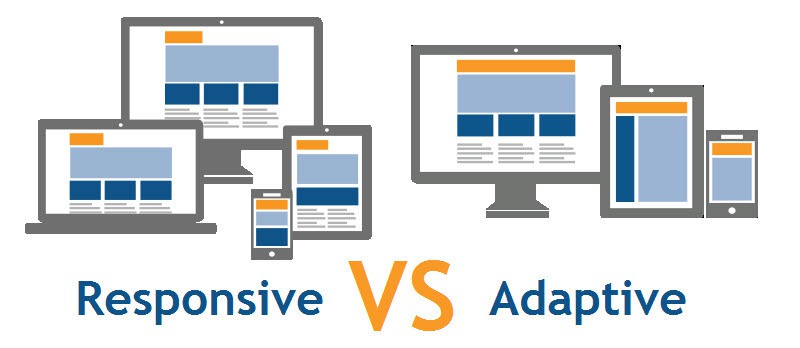Responsive vs Adaptive Web Design: What’s the Difference?

Strong 8k brings an ultra-HD IPTV experience to your living room and your pocket.
If you having a website that delivers a seamless experience across all devices is more than just a trend it’s a necessity. But when it comes to mobile optimization, businesses often face a key question: Should you choose responsive or adaptive web design?
Both strategies aim to improve usability across devices, but they differ in execution, flexibility, and performance. In this guide, we’ll break down the differences between the two, explore their pros and cons, and help you decide which is the best fit for your brand—especially if you're working with a Sacramento web design agency.
What Is Responsive Web Design?
Responsive web design (RWD) uses flexible grids, images, and CSS media queries to automatically adjust a website’s layout based on the screen size or device type. Rather than creating separate versions for desktops, tablets, or smartphones, a responsive website adapts fluidly to any screen resolution.
Key Features of Responsive Design:
Single Layout: One design that scales across devices.
Fluid Grids: Uses relative units (like percentages) instead of fixed pixels.
Media Queries: Adjust design elements based on screen characteristics.
Advantages of Responsive Web Design:
Better User Experience: Provides consistency across all devices.
Improved SEO: Google prioritizes mobile-friendly, responsive sites in its search rankings.
Lower Maintenance: Only one version of the site needs to be updated and maintained.
Cost-Effective: Saves time and resources in the long term.
What Is Adaptive Web Design?
Adaptive web design (AWD) takes a different approach. Instead of using one fluid layout, it offers multiple fixed layouts that are triggered based on the user’s device. The design is tailored to pre-defined screen sizes, such as mobile, tablet, and desktop.
Key Features of Adaptive Design:
Multiple Layouts: Usually six fixed-width designs targeting common devices.
Device Detection: Uses JavaScript or server-side scripts to identify screen size.
Tailored Experience: Each layout is optimized for its specific device.
Advantages of Adaptive Web Design:
Optimized Performance: Since layouts are device-specific, users only download what's needed.
Better Control: Designers can fine-tune the user experience for different screens.
Targeted UX: Ideal for web applications or platforms with varied use cases.
Key Differences Between Responsive and Adaptive Design
| Feature | Responsive Design | Adaptive Design |
| Design Approach | Fluid and flexible layout | Multiple fixed layouts |
| Screen Adjustments | Uses CSS to resize content dynamically | Predefined layouts triggered by device |
| Development Time | Faster and more straightforward | More complex and time-consuming |
| User Experience | Consistent across devices | Customized per screen size |
| SEO Benefits Strong | Strong (favored by Google) | Moderate (can be optimized but trickier) |
| Performance | Slightly heavier on mobile | Optimized per device |
Why Web Design Agencies Prefer Responsive Sites
When working with a Sacramento web design agency, you’ll find that responsive design is often the default recommendation. Why? Because it aligns perfectly with modern search engine requirements, user expectations, and local business goals.
In a city like Sacramento where industries range from government and education to healthcare and tech businesses need websites that perform well on every device. Local consumers frequently browse sites on their smartphones while on the go. A responsive site ensures a smooth browsing experience, which leads to higher engagement and better conversions.
Moreover, responsive design simplifies ongoing maintenance. Whether you run a law firm, restaurant, or online shop in Sacramento, your design team can focus on one codebase rather than managing multiple layouts, reducing costs and ensuring consistency.
Collaborating with an experienced Sacramento web design team can help you implement responsive strategies that not only look great but also rank well in search engines and convert visitors into customers.
Which Approach Is Better for Your Website?
The best choice depends on your business goals, budget, and user behavior.
Choose Responsive Design if:
Your audience uses a wide variety of devices.
You want better SEO performance.
You have a limited development budget.
You want a long-term, scalable solution.
Choose Adaptive Design if:
You need complete control over UX on different devices.
You're building a web application or software platform.
Your traffic comes predominantly from a few known device types.
Speed and performance are your top priorities.
SEO Implications: Responsive vs Adaptive Design
From an SEO standpoint, responsive design holds a clear advantage. Google explicitly recommends responsive design because it uses a single URL and HTML, making it easier to crawl, index, and rank pages.
Adaptive design can also be optimized for SEO, but it requires extra effort. For example, you may need to implement Vary HTTP headers, manage duplicate content issues, and ensure that mobile layouts load quickly—all of which require more technical oversight.
Conclusion
Choosing between responsive and adaptive web design is not just a technical decision it’s a strategic one. Responsive design offers flexibility, simplicity, and better SEO value, making it the go-to choice for most businesses. Adaptive design, while more complex, can deliver exceptional results for high-performance applications or niche use cases.
No matter which route you choose, partnering with a skilled Sacramento web design agency ensures you’ll get a site that’s not only visually appealing but also optimized for performance, user experience, and growth.
Note: IndiBlogHub features both user-submitted and editorial content. We do not verify third-party contributions. Read our Disclaimer and Privacy Policyfor details.




